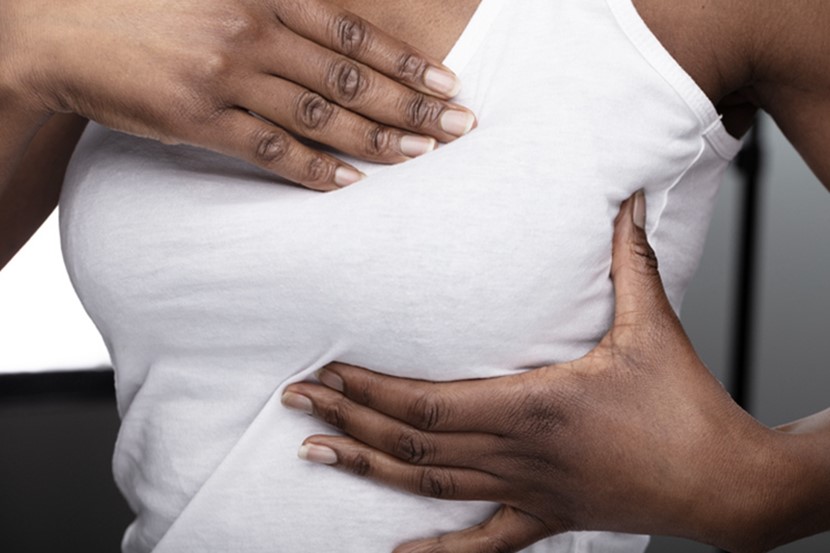Mastitis can get nasty – here’s how to limit the risk

Mastitis is inflammation of your breast tissue, particularly the milk ducts and glands. It’s really common, occurring in about one in five women, and can be very painful. It most often happens during the first four weeks of breastfeeding when cracked nipples, positioning problems and breast engorgement are most common. Just what you need with a new baby! The good news is if you get mastitis, you can continue to nurse your baby. In fact, breastfeeding usually helps to clear up infection, and nursing will not harm your baby. Below are the symptoms and best treatments as outlined by the New Zealand Ministry of Health.
What are the symptoms of mastitis?
It’s important to talk to your doctor or midwife if you get a sore breast, a tender red, lumpy area in your breast or feel unwell with 'flu-like' symptoms. Visit your doctor straight away if you have a fever, as you may need antibiotics to treat an infection.
What do I do to manage mastitis?
1) Empty your breast
Breastfeed on demand, starting with the sore breast. Make sure your baby is latched on correctly (mouth covering almost the entire areola, not just the nipple) and drains the breast well.
It’s quite safe to feed your baby from the affected breast.
Try different feeding positions to improve drainage (baby's chin near the inflammed area).
Wear loose fitting clothes and a bra that is well fitting and does not dig in anywhere (obstructing the flow of milk).
Change breast pads or bras frequently if you are leaking milk.
2) Gentle massage and compresses
Warm compresses could be used to assist milk flow before feeding or expressing (eg, a warm shower, or covered hot water bottle, or wrapped wheat bag). Make sure none of these are too hot though.
Gentle massage of the affected breast and lying flat prior to a feed can be helpful. The fingers (not tips) can be used in firm stroking movements towards your sternum and armpit.
Care must be taken to avoid massage that is too firm as this can cause trauma and undue pressure and increase inflammation.
Cold packs can also be quite soothing when placed on the breast after feeding.
A soft stretchy support such as tubigrip or boob tube may be better than a bra at this time.
3) Rest and pain relief
It’s very important that you have time to rest and spend time feeding your baby properly.
Ask your partner, family or whānau for more support so you can rest and recover.
If you don't have good support, ask your midwife or Plunket nurse to help you find some support.
Drink plenty of fluid (especially if you have a fever).
Paracetamol can be taken every 4 hours if necessary for the pain and fever.
Ibuprofen can also be helpful.
If you don't improve within 24 hours of treatment, seek further medical advice.
If you have had all the appropriate treatment for mastitis and an area of your breast remains hard, reddened and painful, a breast abscess may have formed or be forming.
What are the causes of mastitis?
Most cases of mastitis are caused because your baby is not latched on or positioned on your breast correctly. This leads to milk stasis, with blocked milk ducts and alveoli, and nipple trauma.
Milk stasis
When milk isn't completely emptied from a breast at feedings, the milk left in the breast tissue can back up and become infected. This is known as milk stasis.
Milk stasis may be caused by:
ineffective breast drainage caused by poor positioning and attachment
scheduled or restricted feeds, long gaps without feeding, missed or short feeds
sudden cessation of breastfeeding
over abundant milk supply
breast engorgement
blocked milk duct
pressure on a particular area of the breast caused by tight bra or holding the breast firmly during feeding
stress and fatigue which leads to less time for breastfeeding
separation from baby.
It can also be caused by bacteria entering your breast. Bacteria from your skin's surface and baby's mouth can enter the milk ducts through a break or crack in the skin of your nipple or through a milk duct opening. Bacteria can multiply, leading to infection. These germs aren't harmful to your baby – everyone has them. They just don't belong in your breast tissues.
Support for mastitis
Phone Plunketline on 0800 933 92 anytime day or night for advice about breastfeeding. You can also talk to your midwife, doctor or Plunket nurse.
If you’re still having breastfeeding problems, ask your midwife if you should be referred to a lactation consultant.
Other groups to contact include La Leche League NZ, your local Parents Centre NZ

